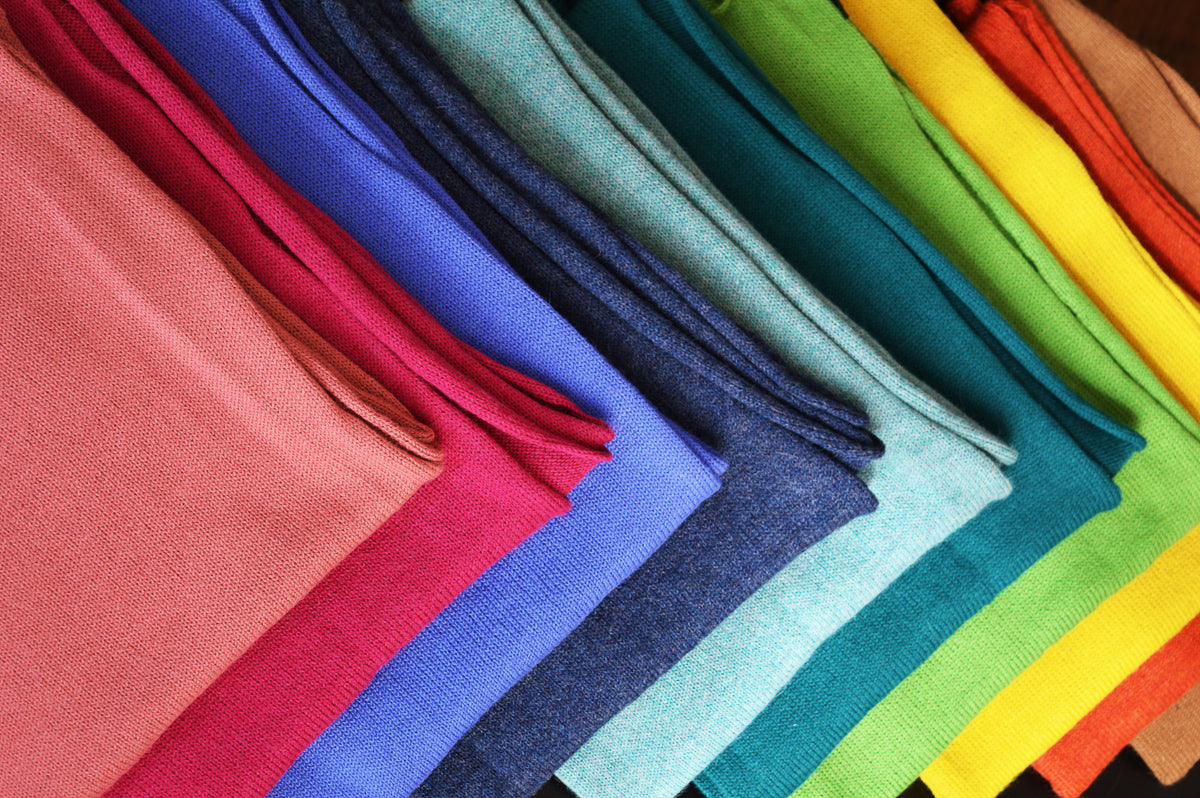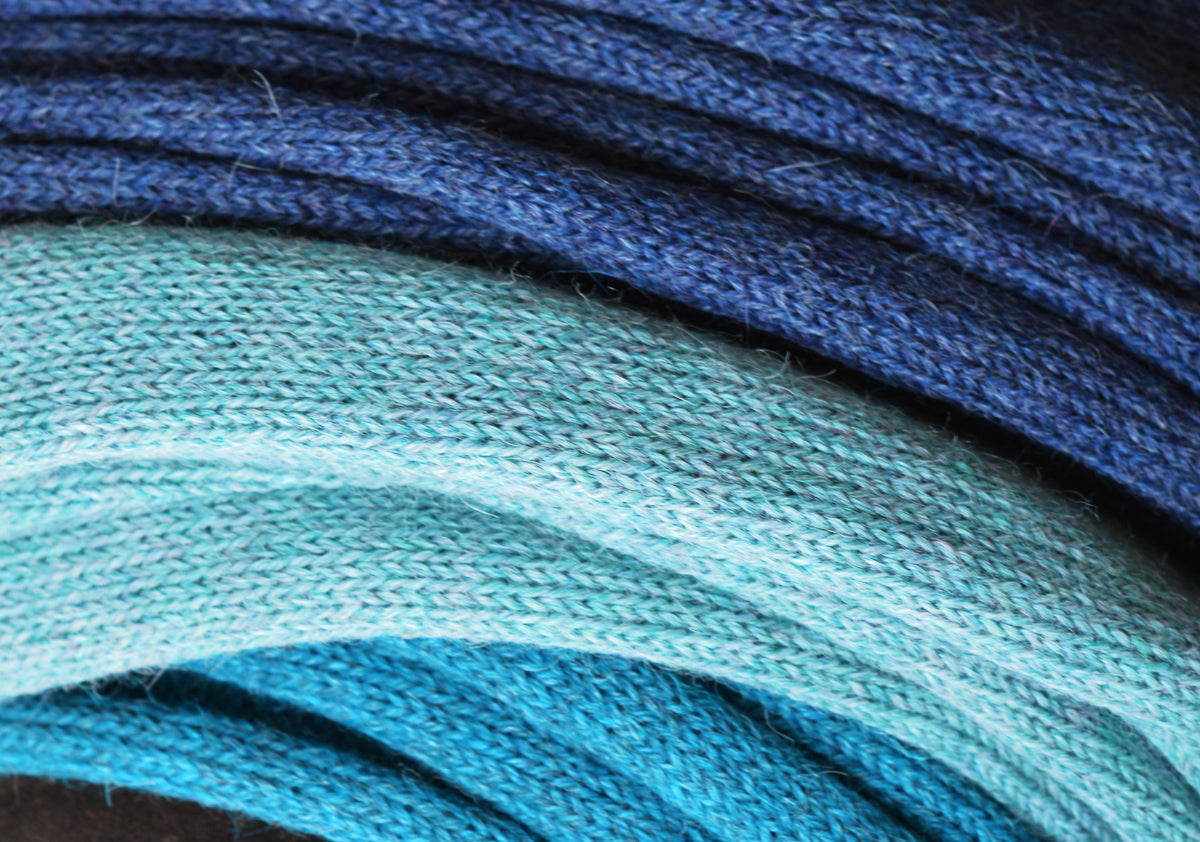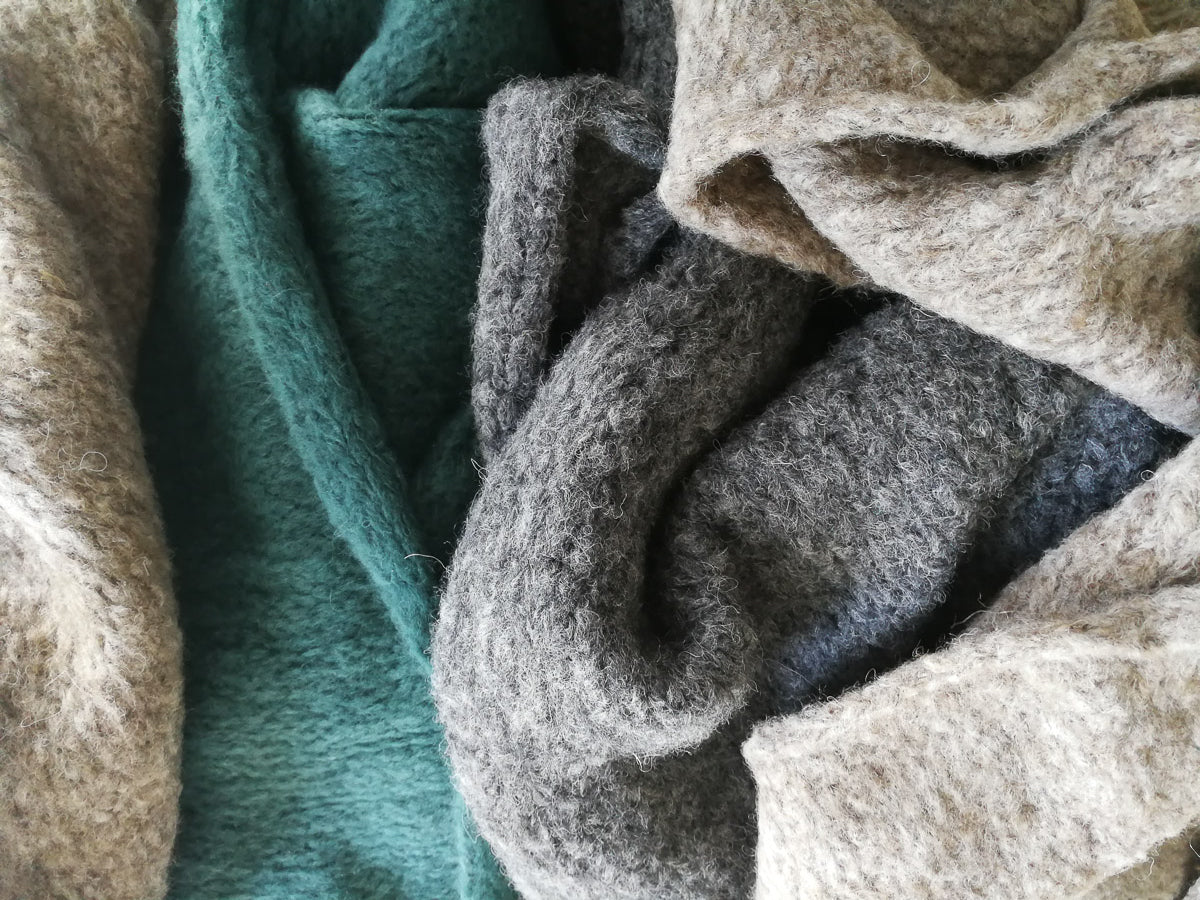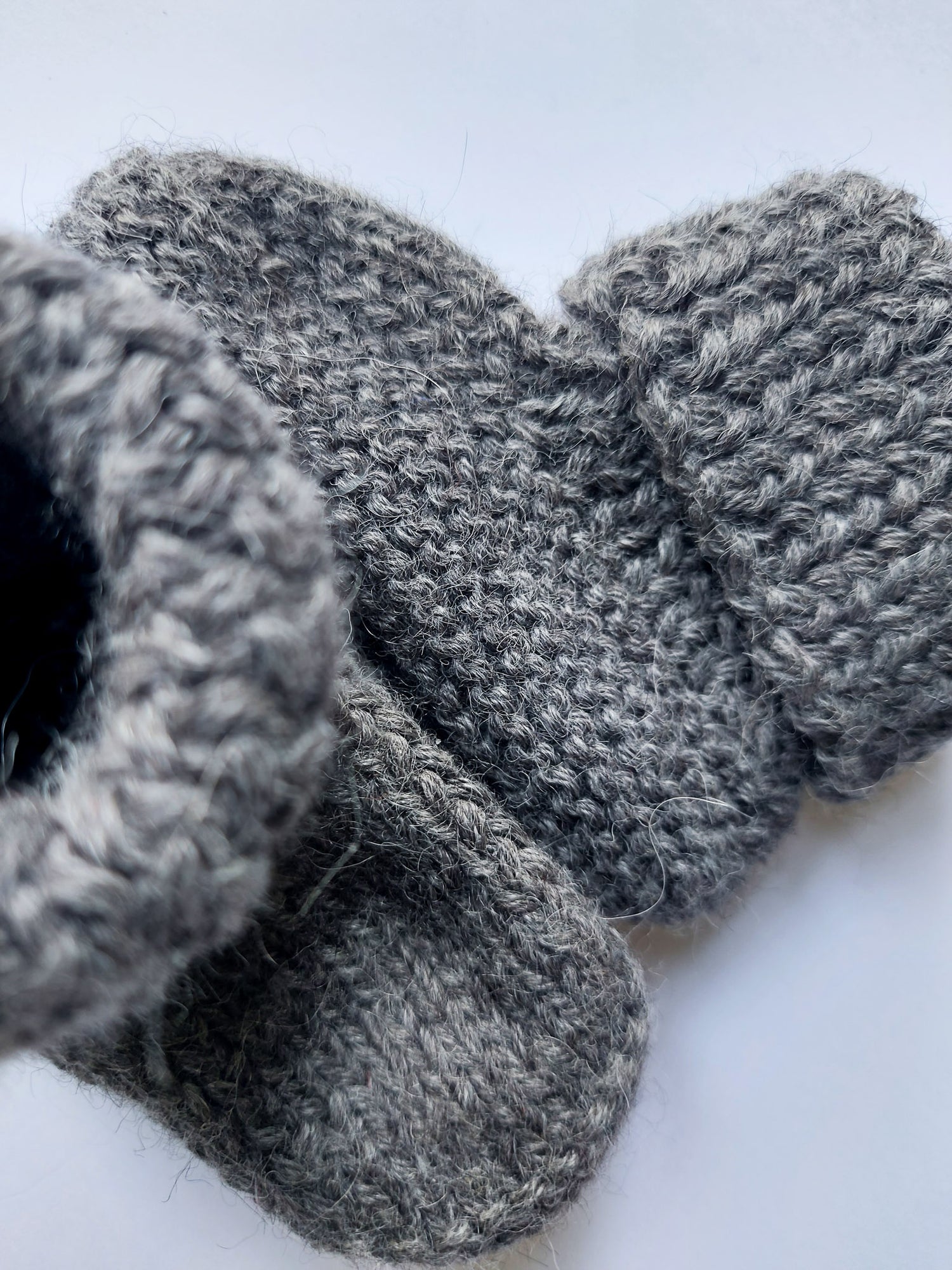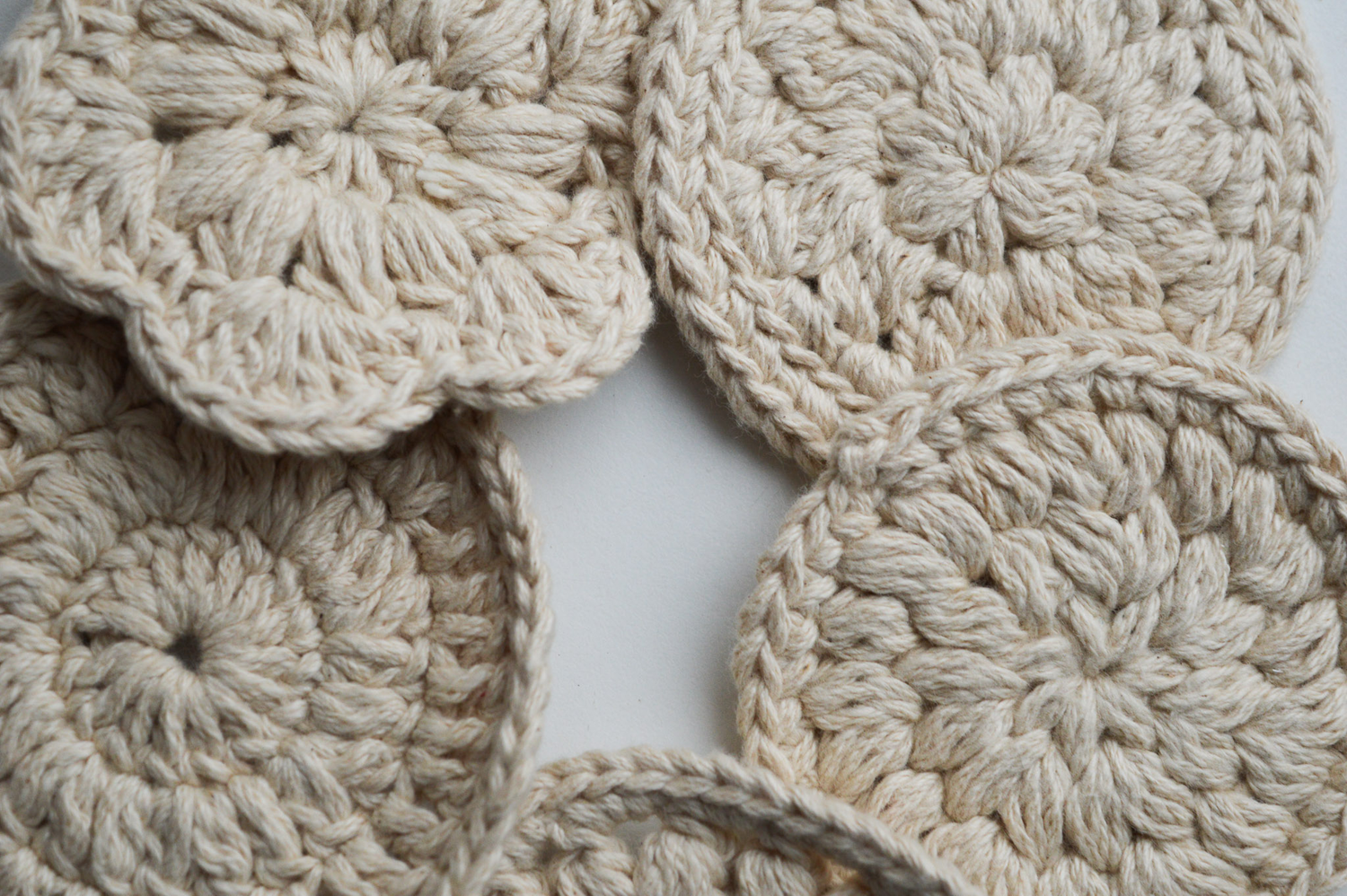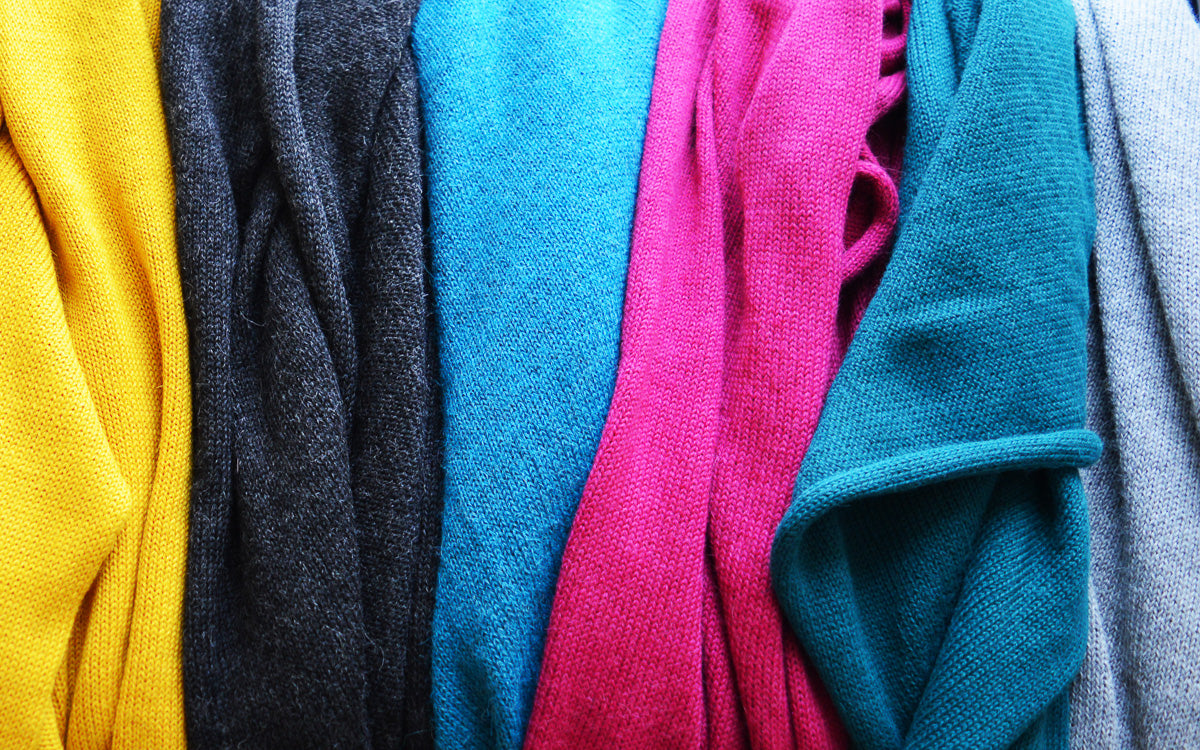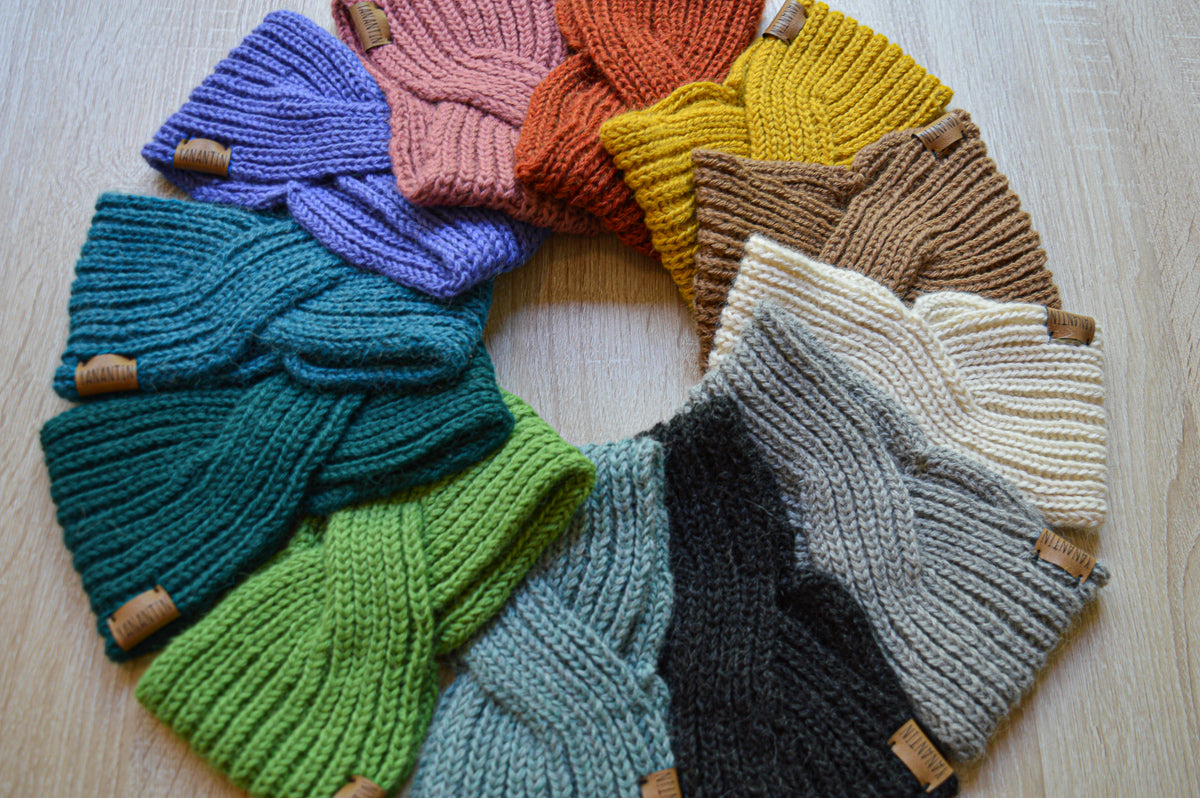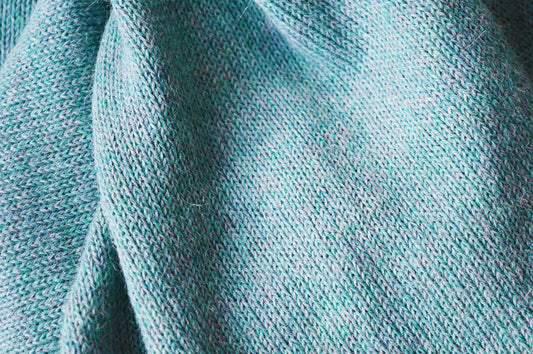
12 Reasons why Alpaca Wool is Sustainable
Share
Alpaca wool is the cashmere, the new merino, the new sustainable fabric. Basically, everyone is hyping up alpaca wool. But why? What are the reasons that alpaca wool is considered sustainable?
Before We Dive In, What Is Sustainability?
According to McGill University, sustainability is:
“Sustainability means meeting our own needs without compromising the ability of future generations to meet their own needs. Embedded in most definitions of sustainability we also find concerns for social equity and economic development.”
So, while a big aspect of sustainability involves the environment, there is more to it. Sustainable garments focus on three main aspects of development:
- Economy
- Society
- Environment
Sustainability captures responsible decisions within all three of these areas.
Remember that nothing is perfect, and neither is alpaca wool, but it is definitely a better option when it comes to sustainability. Here’s why :)
Further ReadingThe UN Brundtland Report (1987) is the original and most widely accepted definition of sustainability, often cited in global policy. |
Alpaca Wool Is Sustainable Because It Is Biodegradable
When a material is biodegradable it means that nature itself can break it down and decompose it. Alpaca wool is biodegradable, which means that it won’t contribute to textile waste.
Many fabrics that are used for our clothing are made of synthetic fibers. Synthetic fibers are not biodegradable, which means that Mother Earth can’t break them down herself. Instead, they need to be recycled or burned.
However, when synthetic garments are thrown away, they often end up in landfills, where they won’t decompose for about 200 years. This means that in the mean time, they generate greenhouse gases, and leach toxic chemicals and dyes into the soil and oceans.
Further Reading
|
Alpaca Wool Is Sustainable Because It Comes In Many Natural Colors
When materials come in a wide range of natural colors, it means consumers have more options to choose from, which in turns means less dyes are necessary. Alpaca wool comes in 22 natural colors, which means there's an undyed color out there "for everyone."
Many fabrics are dyed to expand the available colors for the consumer. However, such dyes are often chemical and toxic, which means that they can contribute to environmental pollution.
Greenpeace has spent YEARS campaigning against fast fashion brands polluting water with chemical dyes and washes that end up in the environment through wastewater (more here: Detox My Fashion - Greenpeace International).
The negative impact of dyed clothing is big:
- Dyeing requires a lot of extra water and extra washes (sometimes even several times to make the colors more vibrant!).
- Dyes in wastewater causes a decrease in the reflection and absorption of sunlight in the water, which disturbs the maritime food chain.
- The toxic chemicals from dyes are absorbed into the skin, contributing to several health issues varying from contact dermatitis to respiratory diseases.
Further ReadingA report from The World Bank: Toxic Threads (2019) details how textile dyeing is one of the largest global sources of water pollution. |
Alpaca Wool Is Sustainable Because It Is a Natural Fiber
Natural fibers are generally better for the environment than synthetic fibers because their production process is less chemical. Alpaca wool is an example of a purely natural fiber.
Alpaca wool comes from an animal called an alpaca. They live in the Andean highlands, where they're shorn once a year. The wool then gets sorted, washed (if necessary washed again with dye) and spun into yarn. The only additions that are used during the production process are detergents and dyes.
Compare this to synthetic fibers, which are “man-made” fibers, but are really made from chemicals. They don’t grow on trees or plants or animals. They are not biodegradable. They don’t have a variety of natural colors. They’re not fluffy, warm or soft.
Further ReadingPROMPERU has done a full analysis, measurement, and interpretation of the environmental footprint of the alpaca value chain based on a Life Cycle Analysis |
Alpaca Wool Is Sustainable Because It Is Odor-Resistant
Alpaca wool is such a smooth fiber, that its core is neatly sealed off, which means that garments made with alpaca wool don’t absorb smells easily. In other words: alpaca wool is odor-resistant.
Without getting too technical, wool fibers have tiny scales that seal of the fibers internal core. Usually, wool fibers aren’t so smooth so they leave room for smells to penetrate the core. But in the case of alpaca wool, those scales actually are small enough to prevent that from happening. And that means that smells don’t stand a chance with alpaca wool.
On top of that, alpaca wool is incredibly breathable, which means that both smells and potentials for smells (e.g. sweat) get absorbed by the fiber and then evaporated in the air. There’s no time for it to start smelling bad.
Apart from obviously not-stinking, the main benefit of being odor-resistant is that you don't have to wash such garments (often). Airing usually suffices and that means that you can save the planet a bit of of water by NOT washing an alpaca woolen garment.
Further ReadingI actually wrote an article about this topic in which I explain in more depth how this works. You can find it here: (COMING SOON!) |
Alpaca Wool Is Sustainable Because It Is Stain-Resistant
Alpaca woolen garments are stain-resistant, which means that they need less washing and are less likely to get ruined by stains.
Of course, when a garment is stain-resistant, it does not mean that it is invincible and 100% stainproof. However, the benefits of stain-resistant garments are noteworthy when you’re investing in an (expensive) alpaca woolen garment.
Being stain-resistant helps garments stay wearable for longer, which makes them more durable in practice.
Oh and btw, more importantly alpaca wool is that inherently, meaning it doesn’t require any chemical treatment for it to be stain-resistant. Whoop!
Don’t worry, I didn’t believe it myself either. But then I tested it out…! Here’s the video of what happened.
Alpaca Wool Is Sustainable Because It Is Wrinkle Resistant
Alpaca wool is naturally wrinkle-resistant, which means that you can wear it, without needing to iron it first.
An iron is just another machine that requires electricity, water and eventually emits greenhouse gases into the environment. According to Mark Gersava (quoted in the Female Network), “every person emit[s] 190 [kilograms] of CO2 equivalent in greenhouse gases each year by ironing clothes.”
Apart from the act of ironing itself, another benefit is that alpaca wool is naturally wrinkle-resistant. Most anti-wrinkle, non-iron, wash-and-wear, wrinkle-free coatings require chemical treatment that can have a negative impact on the environment, on the wearer and on the quality of the garment. Alpaca wool does not.
Alpaca Wool Is Sustainable Because It Is Water-Repellent
Garments that are water-repellent help protect the wearer from rain and moisture. Alpaca woolen products are naturally water-repellent, meaning they can wick away rain and sweat to keep you dry and comfortable.
This feature is especially useful in damp or wet conditions, whether it’s rainy, foggy, or humid, or during activities that make you sweat.
Alpaca wool’s special fibers can wick away a large amount of moisture before it’s absorbed. When some moisture does get absorbed, the fibers can hold about 30% of their dry weight in water before the wearer even feels wet. That’s impressive!
Most importantly, alpaca wool is a sustainable alternative because synthetic waterproof fabrics and water-repellent coatings often rely on potentially harmful chemicals; features that alpaca wool provides naturally.
Further ReadingThe Textile Exchange publishes annual reports on how fibers perform compared to other fibers, including alpaca. |
Alpaca Wool Is Sustainable Because It Can Be Worn Year-Round
When you can wear certain fabrics year-round, it means that you need less clothes to protect you from the elements, without compromising on comfort or usability. Alpaca woolen garments can be worn in many different temperatures and climates.
Thanks to its warm, yet breathable fiber, you can wear alpaca wool in many different circumstances:
- When it snows
- When it rains
- When it is windy
- When it is very cold
- When it is not very cold (mild climate)
- When temperatures fluctuate during the day
- When temperatures are unpredictable
The special alpaca fiber is isolating, insulating, thermoregulating, and breathable. Which, in short, means you can wear it almost any time!
Further ReadingYou can do so many different activities wearing alpaca wool that I wrote an entire article about it. If you’re curious, click the link below to find out which ones: |
Alpaca Wool Is Sustainable Because It Is Strong
Alpaca wool garments are naturally strong and long-lasting. With proper care, they resist holes, stains, and pilling, keeping them looking new for years.
It is rare for natural fibers to be strong and durable. In fact, it is one of the benefits of synthetic fibers to not break down easily, so that you can wear them for intense activities and wash them time after time.
However, synthetic fibers generally have more disadvantages, the most important ones being the chemical production and post-consumer waste that negatively impact the environment.
Knowing that alpaca wool is strong but does not have those downsides, means that it can be a durable and strong alternative to synthetic fibers.
Alpaca Wool Is Sustainable Because It Is Easy To Fix
Alpaca wool garments can often be repaired so the fix is hardly visible, especially when they’re knitted. (Caveat: you might need to ask a skilled knitter to do it for you, though.)
One of the reasons that there is so much post-consumer waste is because we are getting used to throwing out our clothes when they get a hole in them or start to show wear and tear. Instead, fixing an item can actually save that shirt from the landfills for another year or so (or even longer if you’re like me.)
Admittedly, the fashion industry doesn’t make it easy on us to invest in fixable clothes:
- A new “season” is introduced in stores every WEEK (why fix what’s no longer fashionable?)
- Clothes are of non-repairable quality (no extra room in the seams, for example)
- Synthetic fibers are hard to fix (shows easily)
- Synthetic fibers get (irreversibly) damaged easily (wear and tear, pilling, lint)
- (Fast fashion) These days clothing is so cheap that it is easier to buy something new than repair it. (Let alone paying someone to repair it for you!)
Plus, there’s the mindset to be more careful with your clothing when it costs you more to begin with. At least, I am SUPER careful when I buy something high-quality :)
Alpaca Wool Is Sustainable Because It Is Emotionally Durable
With ever-changing trends and low-quality garments, it’s easy to get “tired” of our clothes. Conversely, when we choose timeless designs made from high-quality materials that resist wear and tear, we DON’T get “tired” of them. This concept is called emotional durability, and alpaca wool is an excellent material for it.
Alpaca woolen garments have a luxurious feel and touch. The silky fiber offers excellent “drape,” meaning the fabric naturally flows around your body contours, making the garment look flattering when worn.
When you invest in garments that look good on you, wearing them feels good too. That positive experience makes you much more likely to continue wearing them for a long time.
And when you wear something consistently over a long period, you reduce the need to replace other garments in the meantime! :)
Alpaca Wool Is Sustainable Because It Encourages Social Equity And Economic Development
Most alpaca wool comes from South America, mostly from Peru. In these countries, social exclusion, informal labor, and inequality are real challenges. Luckily, many brands that work with alpaca wool strive to overcome these barriers.
Indigenous people in Peru often live marginalized lives in the Andean countryside. One way they can earn extra income is by selling their alpaca fleece to larger producers, who turn it into high-quality wool. This system benefits Andean communities because it provides a market for fleece that otherwise would have had little value beyond personal use.
Additionally, more-and-more (international) brands focus on the empowerment of their workers through fair pair and reasonable work hours. (There’s still a six-day workweek in Peru!)
Sustainability is about more than protecting the environment. It also means respecting people and helping create a world that provides fair opportunities for everyone.
I started Yanantin Alpaca because I believe that alpaca wool is a sustainable material. All products are made to empower women in Peru with a more-than-fair-salary and a flexible work environment.
Take a look at all Yanantin Products and get one of those sustainable items for your own wardrobe here: Products – Yanantin Alpaca

